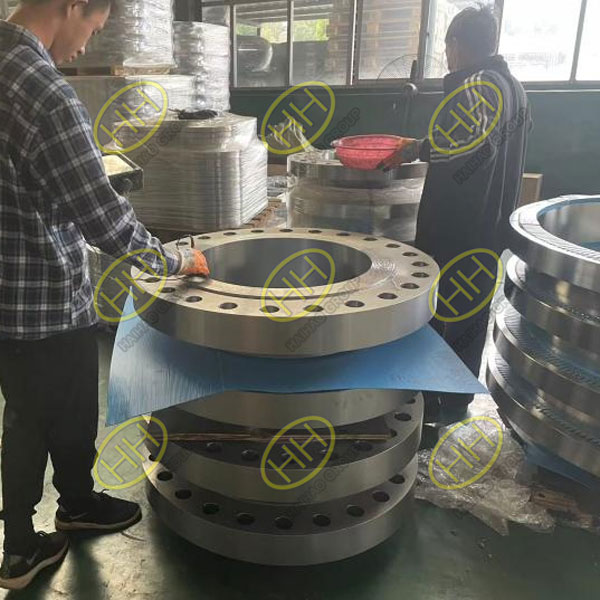Precision unveiled ultrasonic testing in flange manufacturing
Today marks a milestone as our Indian client’s recent order of flanges undergoes ultrasonic testing, a technique harnessing the unique properties of ultrasonic waves to inspect component defects. Let’s delve into the intricacies of ultrasonic testing and its role in ensuring the quality of our flanges.
Understanding Ultrasonic Testing:
Ultrasonic testing relies on the ability of ultrasonic waves to penetrate deep into metal materials. As these waves traverse from one surface to another, reflections occur at the interface edges, revealing any potential flaws within the component. When the ultrasonic beam encounters a defect and reflects off the component’s bottom surface, it generates pulse waveforms on a fluorescent screen. The analysis of these waveforms allows us to determine the location and size of defects.
Types of Ultrasonic Testing:
Ultrasonic testing can be categorized based on principles such as defect echo, penetration, and resonance. Additionally, it involves different waveforms, including longitudinal, transverse, surface, and plate waves. Each type serves a specific purpose, from detecting defects in metal ingots and plates to identifying flaws in welded joints.
The Testing Process:
Preparation of the Specimen:
Understanding the material specifications, performance, manufacturing methods, and defect types is crucial for reliable results.
Determining Testing Conditions:
Selection of ultrasonic testing equipment, probes, and reference blocks is vital. The incident direction is chosen to be as close to perpendicular to potential defects as possible.
Adjusting Testing Instruments:
Calibration of the instrument ensures accurate measurements, including horizontal and vertical linearity. Timebase scaling is adjusted to represent pulse echo distances or depths.
Scanning:
The scanning process involves moving the probe systematically over the entire inspection area, ensuring comprehensive coverage and adherence to specified incident directions.
Defect Evaluation:
The echoes produced during scanning are meticulously analyzed to evaluate the presence, location, and size of defects.
Result Documentation and Reporting:
The results are recorded, and comprehensive reports are generated, detailing the findings of the ultrasonic testing.
Advantages and Disadvantages:
Main Advantages:
High penetration depth, capable of reaching several meters.
Exceptional sensitivity, detecting defects as small as a fraction of a millimeter.
Accurate determination of defect orientation, size, and shape.
Immediate provision of inspection results.
Safe operation with lightweight equipment.
Main Disadvantages:
Lack of direct visual representation of defects.
Technical complexity and susceptibility to various factors.
Challenges in inspecting rough, irregular, small, thin, or non-homogeneous materials.
Difficulty in providing precise qualitative and quantitative characterization of detected defects.
Unsuitability for structures with cavities.
Ultrasonic testing stands as a crucial step in our commitment to delivering flawless flanges. Its combination of precision, versatility, and immediate results ensures that every product adheres to the highest quality standards, meeting and exceeding the expectations of our clients.


